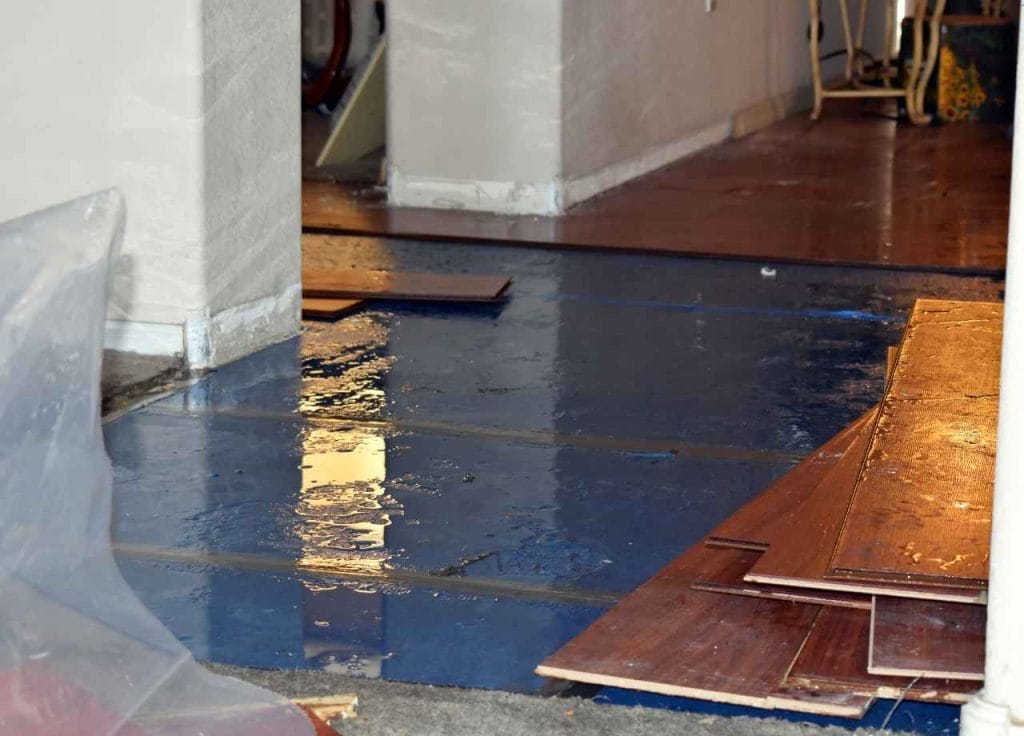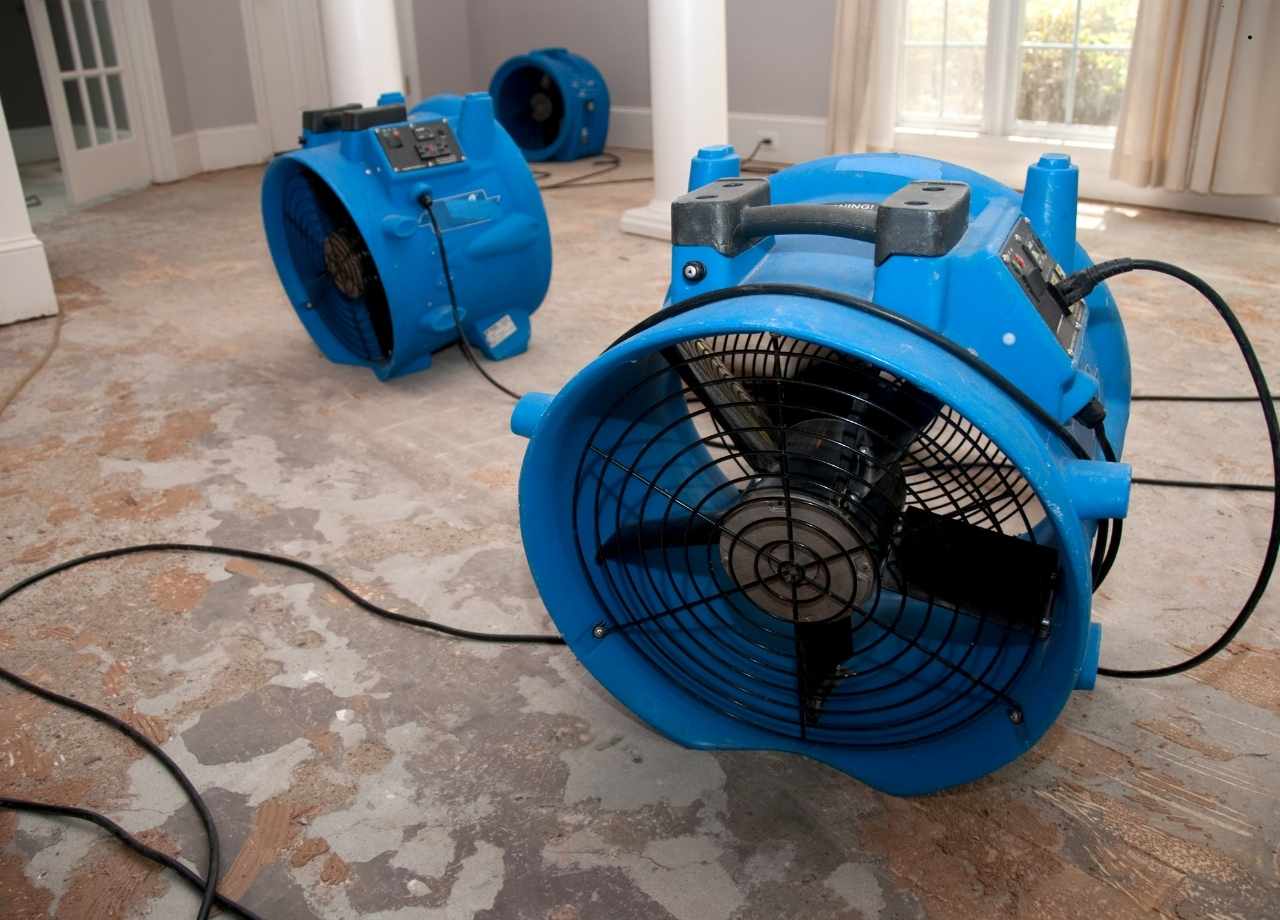Living in Jacksonville, homeowners are well aware that water is both a blessing and a threat. Abundant rainfall, humidity, and storms put pressure on homes every year. At First Coast Contracting, we provide expert restoration and remodeling whenever water damage strikes. This guide explores the main causes of water intrusion in Jacksonville homes, why they matter, and what you can do to prevent them.
Table of Contents
Natural Weather and Climate Effects
Jacksonville’s coastal location brings heavy rain seasons, tropical storms, and even hurricanes. These events increase the volume and force of water impacting structures. Excess stormwater can overwhelm drainage systems or back into homes through ground-level entry points. High winds may tear roof tiles and damage flashing, creating immediate leak risks. Over time, repeated exposure accelerates wear and allows micro-gaps to form in the roof, siding, and foundation.
Humidity is also a major concern. Persistent moisture encourages mold and rot within wall cavities, under floors, and around windows. Though not obvious right away, mold colonies can grow within days of excessive dampness, undermining structural integrity and indoor air quality. Homes not designed or maintained to handle Florida’s climate are more vulnerable to slow-developing but serious water damage.
Roof and Gutter Failures
A common culprit in residential water damage is a compromised roof. Aging shingles can curl, crack, or lose granules. Flashing—metal strips sealing roof-to-wall intersections—often fails first, especially if improperly installed or neglected. When this happens, roof leaks start small but spread quickly under roofing felt, allowing water to sin into sheathing and insulation. What may begin as a stain on the ceiling can evolve into structural rot and mold behind the scenes.

Gutters are equally important but often overlooked. In Jacksonville, gutters frequently clog with leaves and debris from oak, pine, and palm trees. Blocked gutters cause rainwater to back up and overflow along exterior walls, saturating siding and foundation areas. Overflow also increases fascia board and soffit deterioration, which compromises roofing structure. Downspouts that are too short or ineffective may dump water next to the home’s foundation—leading to basement or crawl space flooding.
Foundation and Grading Issues
Another prevalent source of water infiltration is soil grading. Ideally, the ground around a home pitches away from the foundation by at least six inches over six feet. In many Jacksonville neighborhoods, regrading hasn’t been addressed since construction. Soil settles over time or shifts during landscaping so water pools near the foundation. This creates hydrostatic pressure that forces moisture through foundation cracks and porous concrete blocks.
Foundation cracks—whether hairline or larger—provide a direct path for water to enter basements, crawl spaces, and slabs. Over time, moisture runoff from improper drainage exacerbates these cracks, widening them and allowing more water in. Once the foundation is compromised, moisture wicks throughout walls and subfloors, increasing the risk of rot, mold, and pest infestations. Without addressing grading and drainage, repairwork becomes only a temporary fix.
Plumbing System Failures
Plumbing issues inside the home are often the silent thieves of equity. Water damage due to leaking pipes, fittings, or fixtures can go unnoticed behind walls and under floors for weeks or even months. Copper pipes may corrode, especially when water chemistry is unbalanced, producing small leaks that become significant. PEX and PVC fittings can degrade from UV exposure or improper installation, leading to sudden bursts. Hidden plumbing leaks compromise wooden structural members, PSU and insulation, and plaster drywall—potentially requiring extensive rebuilds.
Older homes in Jacksonville sometimes still use galvanized steel piping, which is prone to clogging and eventual failure. As the interior rusts, water flow becomes restricted, and pipes slowly leak or burst from corrosion. Even shower pans, washer supply lines, and garbage disposals fall into this category. Early detection through regular inspections and leak alarms can protect homes from a small drip turning into a major loss.
Window and Door Flashing Defects
Properly installed windows and doors block water, but Jaksonville’s climate stresses framing details relentlessly. Flashing, sealants, and insulation degrade over time. When flashing is missing, incorrectly installed, or damaged, rainwater can slip behind the siding and penetrate the jamb, sills, and headers. This leads to rot in wood framing and mold growth on interior walls.
Sliding doors and garage doors are also at risk. The weather-stripping and thresholds around these entry points are often under strain from high humidity, wind-driven rain, and heavy usage. Even minor imperfections in alignment or caulking can let water inside. Without timely replacement of worn weather seals or repair of damaged frames, moisture introduces itself right at the weakest point.
HVAC and Appliance Leaks
Air conditioning units are everywhere in Jacksonville, and they introduce a distinct risk to water damage. If condensate drains clog or overflow pans crack, water seeps into attic, ceiling, or wall cavities. Ductwork laid through these damp areas then carries moisture further into living areas—leading to mold, musty odors, and insulation breakdown.
Similarly, household appliances—refrigerators with ice makers, dishwashers, washing machines—can create large-scale leaks when hoses degrade or connections fail. In multi-story homes, a burst hose on the upper level can pour water directly through ceilings and walls below, wrecking finishes and interior framing. High-efficiency models may exacerbate this because they rely on smaller, lower-margin hoses that are more brittle.
Landscape and Irrigation Problems
Landscaping that looks beautiful can hide serious drainage flaws. Sprinkler heads that are misaligned or clogged spray directly onto siding, chasing water down into weep holes and cracks. Retaining walls built too close to the house or without proper drainage channels may reroute stormwater toward the foundation. Mulch beds sloped toward the home overwhelm waterproofing and allow inches of saturated earth against basement or crawlspace walls.
Even backyard grading can be deceptive; subtle dips toward the home often aren’t visible until flooding occurs. A single heavy rainstorm may expose how landscaping directs water under the house. Solutions often include installing French drains, improving slab waterproofing, or redirecting downspouts via buried drainage tubing.
Attic and Ventilation Mistakes
Attic spaces in Jacksonville must handle both rain and humidity. Attics that aren’t properly ventilated trap moist, warm air rising from living spaces. This air condenses on uninsulated underside of decking and rafters, creating slow water accumulation. While attic condensation isn’t as dramatic as a burst pipe, it promotes persistent mold and weakening of framing over time.
Roof vents, gable vents, and soffit vents may be blocked by insulation or debris. Attic fans improperly wired can accidentally pull humid outside air into the attic rather than exhausting it. Moisture buildup here spreads throughout adjacent walls and ceilings. Addressing attic ventilation and improving insulation barrier stops this process before it becomes a hidden hazard.
DIY Waterproofing Mistakes
Many homeowners tackle waterproofing themselves—but incomplete or incorrect repairs often worsen the problem. Over-caulking around windows, using incompatible sealants, DIY crack injection without assessing structural integrity—all of these can lead to leaks. Using interior-facing solutions only masks symptoms while allowing water to collect behind walls.

Splash blocks placed haphazardly beneath downspouts may redirect water unexpectedly. Waterproof paint applied to walls without fixing external drainage only delays the real issue. True waterproofing involves maintaining exterior systems, drainage, grading, flashing, and properly installed barriers. Consulting an expert ensures lasting results rather than repeating short-lived fixes.
What You Can Do Right Now
- Inspect roof and gutters twice a year, especially after storms. Check for missing shingles, cracked flashing, and clogged downspouts redirecting water toward the house.
- Check plumbing lines monthly, especially supply hose connections and condensation drains. Look for moisture stains under sinks, behind appliances, and on drywall.
- Ensure grading slopes away from your home. For every window well, extend soil at least 6 inches downward for 6 feet.
- Ventilate the attic properly with functioning soffit, ridge, and gable vents. Use attic fans only when correctly installed.
- Evaluate landscape irrigation and sprinkler heads. Adjust spray patterns so water hits only turf and plant beds—not siding.
- Invest in leak detection alarms around washers, HVAC equipment, and utility sinks. Early alert saves thousands in damage.
- Seal windows and exterior penetrations annually. Use high-quality, paintable caulk rated for exterior joints.
Final Thoughts
Water damage in Jacksonville homes comes from a mix of climate stress, aging construction, and routine wear. The most effective defense is a proactive maintenance strategy that combines visual inspections, moisture monitoring, and timely repairs. Start with your roof, gutters, grading, and plumbing, and expand into HVAC, attic, and landscape systems.
When minor issues become emergencies, restoration of interiors, structure, and finishes is best handled by professionals. That’s where First Coast Contracting brings its strength—extensive experience in emergency restoration, insurance collaboration, and meticulous rebuilding. Address issues early, follow a regular maintenance schedule, and safeguard your home’s integrity against Jacksonville’s water challenges.




